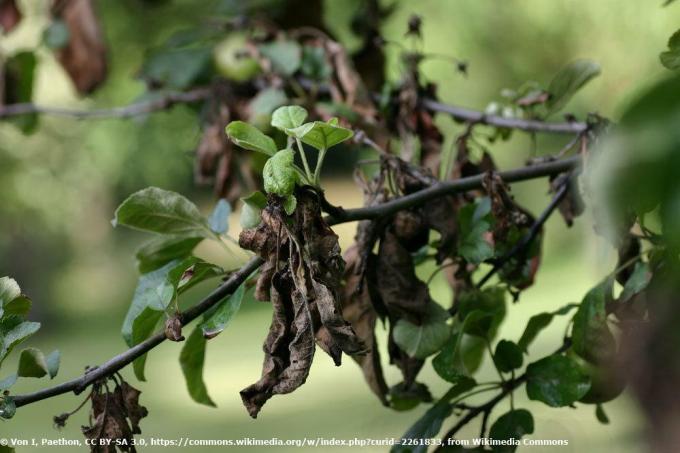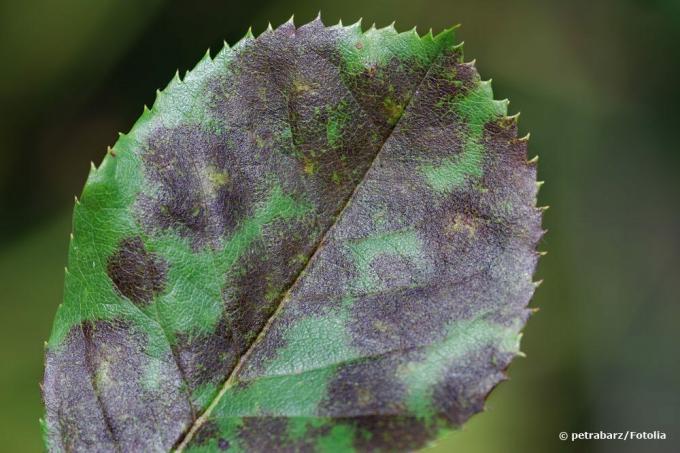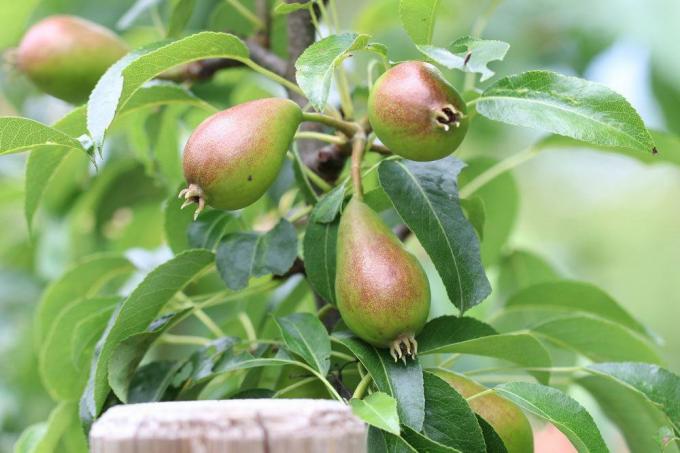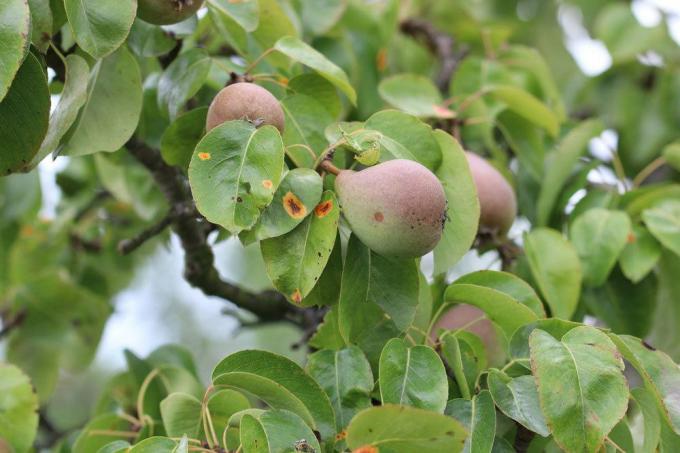
table of contents
- prevention
- Controls
- Diseases
- Pear blossom brandy
- Fire blight
- Black spot disease
If the pear tree has black leaves, several causes can appear to be responsible. For the correct treatment and avoiding further damage, it is first important to recognize the respective trigger. Only then can appropriate action be taken against it. However, diagnosis is not always easy.
prevention
The pear tree is susceptible to a wide variety of diseases. Pests can transmit pathogens. However, unfavorable conditions at the site can also lead to an increased susceptibility to infections.
Therefore, to reduce the risk of illness, the following factors are important:
Choose a resistant pear variety
Some breeds are more resilient than others. Those who pay attention to the resistance when making the selection can keep the risk of diseases low.
Select the optimal location
A lack of protection or an unsuitable substrate do not have to make the pear tree die. However, unfavorable conditions at the location can weaken the crop and thus increase the risk of damage and infection. A fully sunny, protected place and a humus-rich, lime-poor and well-drained substrate are ideal.
Adjust care and keep clean
As a fruit tree, the pear does not need a lot of maintenance, but it should be done properly. Adequate watering when it is dry, regular fertilization and clippings with clean cutting tools are an essential part of this. If cutting tools are not disinfected before and after cutting, germs can get onto the open cut surfaces. This increases the risk of infection.
Controls
In order to identify diseases early and to be able to differentiate them as easily as possible, you should check the pear tree regularly. For this purpose, leaves, flowers, fruits and shoots are simply examined in detail every one to two weeks. That is enough to detect changes. The controls should be carried out from the first budding in spring and continued until late autumn.
Diseases
Black leaves on the pear tree can be caused by the following three diseases:
- Pear blossom brandy
- Fire blight
- Black spot disease
While pear blossom blight and black spot disease are still treatable, you should destroy all parts of the plant as quickly as possible in the case of fire blight. This is the only way to prevent the spread and damage of numerous plants.
Pear blossom brandy
The pear blossom brandy is one bacterial disease, for which Pseudomonas syringae pv. Syringae shows responsible. A risk factor for the infection of the pear is found particularly through Frost damage. Late frost in particular can create weak spots if the protection is inadequate, through which the pathogens can penetrate the pear tree.
Pear blossom brandy can be recognized by the following signs:
- Black spots on the flowers, leaves and fruits
- Leaves fall off
- Fruits do not reach maturity and fall off prematurely
Treatment with appropriate pesticides is possible. Copper-containing products have proven themselves.
Fire blight
Fire blight is one of the most dangerous Diseases that can affect plants. The trigger is the Erwinia amylovora bacterium.
The signs are very clear and therefore comparatively easy to recognize, because the infected plant sections of the pear turn black and fall off comparatively quickly.
If this occurs, you need to act quickly. The disease is notifiable and must be reported to the respective municipal gardening authority. There are no penalties here, but help. As a rule, the infected plants are then removed and destroyed to prevent further spread.
Black spot disease
Black spot disease is caused by the fungus Stemphylium vesicarium. Once infected, black spots form, which can spread over all the leaves of the pear. Treatment is difficult but possible. The following three steps are important for this:
1. All infected parts of the plant on the pear tree must be removed and destroyed or disposed of. The cutting tools must be thoroughly disinfected.
2. The entire pear tree must be thoroughly treated with a fungicide that is proven to be effective against black spot disease.
3. The fungal infection can arise again and again if there are spores in the soil. The soil around the pear tree must therefore also be treated with the fungicide.







